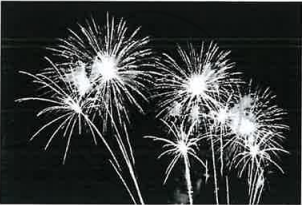Advertisements
Advertisements
Question
Define the term "power of accommodation" of human eye.
Solution
The power of accommodation of the human eye refers to the ability of the eye to change the focal length of its lens so as to focus the light from both nearby and distant objects on the retina.
APPEARS IN
RELATED QUESTIONS
Write short notes on the following: Retina
How does the eye regulate the amount of light that falls on the retina?
The optical prescription for a pair of spectacles is :
Right eye : −3.50 D
Left eye : −4.00 D
Which is the weaker eye?
What job does the pupil of the eye do?
What is the principal function of the eye-lens?
Fill in the following blank with suitable word:
The part of eye sensitive to light is...................
What happens to the size of pupil of our eye (i) in dim light (ii) in bright light?
Name the cells on the retina of an eye which are sensitive to (i) bright light (ii) dim light (iii) sensation of colour.
To focus the image of a nearby object on the retina of an eye:
(a) the distance between eye-lens and retina is increased
(b) the distance between eye-lens and retina is decreased
(c) the thickness of eye-lens is decreased
(d) the thickness of eye-lens is increased
How does the eye change in order to focus on near or distant objects?
(a) The lens moves in or out
(b) The retina moves in or out
(c) The lens becomes thicker or thinner
(d) The pupil gets larger or smaller
The size of the pupil of the eye is adjusted by:
(a) cornea
(b) ciliary muscles
(c) optic nerve
(d) iris
What shape are your eye-lenses:
when you look at your hand?
What shape are your eye-lenses:
when you look at a distant tree?
Fill in the following blank with suitable word:
Having two eyes enables us to judge.................more accurately.
Explain clearly why, a person who has lost the sight of one eye is at a disadvantage compared with the normal person who has two good eyes.
Give scientific reason:
One can sense colours only in bright light.
Define the following:
Yellow spot
Draw a diagram of the human eye as seen in a vertical section and label the parts which suit the following descriptions relating to the:
(i) photosensitive layer of the eye.
(ii) structure which is responsible for holding the eye lens in its position.
(iii) structure which maintains the shape of the eyeball and the area of no vision.
(iv) anterior chamber seen in front of the eye lens.
(v) outermost transparent layer seen in front of the eyeball.
Name the following:
The focal length of the lens is altered by the contraction of which type of muscles.
Name the following:
The area where the image is formed but not seen by our eye is termed as.
In a relaxed state, the focal length of healthy eyes is _______.
Write the name.
The screen with light sensitive cells in human eye.
The larynx has fold of tissue which vibrate with the passage of air to produce sound.
What is ‘white of the eye’?
Match the following:
| Column - I | Column - II | ||
| 1 | Retina | a | Path way of light |
| 2 | Pupil | b | Far point comes closer |
| 3 | Ciliary muscles | c | near point moves away |
| 4 | Myopia | d | Screen of the eye |
| 5 | Hypermetropoia | e | Power of accomodation |
Chris was watching the display of fireworks in the sky.

- Trace the path of the light rays using the following terms:
Fovea, Lens, Conjunctiva, Pupil, Cornea. - Name the nerve that carries the impulse for vision to the brain.
An aperture that controls the passage of light into the eye is ______.
Give reason:
Blind spot is considered as 'area of no vision'.
